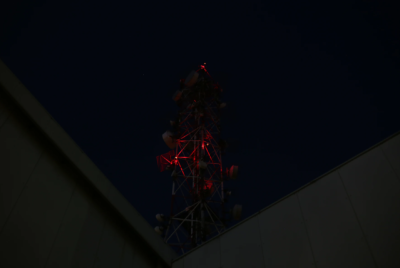We get it, not everyone knows a lot of 6G and its dangers. When embarking on…
5G: Understanding Potential Dangers in Big Cities versus Suburban Areas

Potential Dangers of 5G
In today’s hyper-connected world, the deployment of 5G technology and its potential dangers promises faster internet speeds, seamless connectivity, and enhanced digital experiences. However, as the implementation of 5G networks accelerates, concerns about potential health risks have emerged, particularly in densely populated urban areas compared to their suburban counterparts. Understanding the nuances of these concerns is essential for informed discourse and decision-making. Here, we delve into the perceived dangers of 5G in big cities versus suburban areas.
Urban Landscape: Intensified Concerns
Big cities, with their towering skyscrapers, bustling streets, and dense populations, present a unique set of challenges when it comes to 5G deployment. One primary concern revolves around the increased density of cell towers and small cell installations required to support the network infrastructure adequately. These installations often involve placing antennas on lampposts, rooftops, and other structures, bringing the radiation source closer to inhabitants.
Critics argue that the proximity of these antennas to residential and commercial spaces heightens exposure to electromagnetic fields (EMF), potentially leading to adverse health effects. While research on the long-term impact of EMF exposure remains inconclusive, some studies have suggested associations with increased cancer risk, neurological disorders, and reproductive issues.
Furthermore, the high concentration of wireless devices and electromagnetic signals in urban environments may exacerbate the cumulative effects of EMF exposure. With millions of smartphones, tablets, and IoT devices constantly transmitting data, concerns about electromagnetic pollution have intensified, prompting calls for more stringent regulations and thorough safety assessments.
Additionally, the rapid pace of technological advancement and the pressure to maintain competitiveness often result in expedited rollout schedules, leaving little room for comprehensive health and environmental impact assessments. In the rush to embrace the benefits of 5G, urban dwellers find themselves grappling with uncertainties surrounding potential risks to their well-being.
Suburban Settings: Distinct Challenges
In suburban areas, characterized by lower population densities and more expansive landscapes, the concerns surrounding 5G differ in some respects but remain significant. While the concentration of cell towers and small cell installations may be lower compared to urban centers, suburban communities are not immune to potential risks associated with EMF exposure.
One notable concern in suburban settings is the proximity of residential neighborhoods to transmission towers and base stations, particularly in areas where zoning regulations are less stringent. Critics argue that the siting of these installations near homes and schools increases the likelihood of prolonged exposure to electromagnetic radiation, especially for vulnerable populations such as children and the elderly.
Moreover, the sprawling nature of suburban environments poses challenges in terms of monitoring and regulating EMF levels effectively. Unlike the centralized infrastructure of urban areas, where regulatory authorities can closely monitor network deployments, suburban landscapes may lack the resources and oversight necessary to ensure compliance with safety standards.
The perceived lack of transparency and community engagement in the decision-making process regarding 5G deployment often fosters mistrust and skepticism among suburban residents. Without adequate information and avenues for public participation, concerns about the potential health risks associated with electromagnetic radiation remain unresolved, fueling debates and resistance to the expansion of 5G networks.
Navigating Uncertainty: Towards Informed Decision-Making
As the debate over 5G dangers unfolds, stakeholders must navigate a landscape fraught with uncertainty, competing interests, and evolving scientific understanding. While concerns about potential health risks persist, it is essential to approach the issue with nuance and evidence-based reasoning.
First and foremost, robust research into the long-term health effects of EMF exposure is imperative to inform regulatory policies and public discourse accurately. Governments, industry stakeholders, and independent researchers must collaborate to conduct comprehensive studies that address existing gaps in knowledge and provide clarity on the risks posed by 5G technology.
Proactive measures should be implemented to mitigate potential hazards and safeguard public health. This includes adopting precautionary measures such as prudent siting of cell towers, implementing exposure limits based on the latest scientific findings, and promoting awareness campaigns to educate the public about EMF safety.
Fostering transparency, accountability, and community engagement in the decision-making process surrounding 5G deployment is essential to building trust and addressing public concerns effectively. By involving stakeholders in meaningful dialogue and soliciting input from affected communities, policymakers can promote inclusivity and ensure that the benefits of 5G technology are realized without compromising public health and well-being.
In conclusion, the perceived dangers of 5G in big cities versus suburban areas reflect the complex interplay of technological innovation, public health considerations, and regulatory frameworks. While urban environments present unique challenges in terms of density and infrastructure, suburban settings are not exempt from concerns surrounding EMF exposure and community engagement. By prioritizing scientific research, implementing precautionary measures, and fostering inclusive decision-making processes, stakeholders can navigate the uncertainties surrounding 5G and pave the way for a more informed and responsible deployment of this transformative technology.



